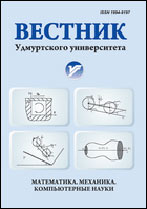|
This article is cited in 1 scientific paper (total in 1 paper)
COMPUTER SCIENCE
Validation of the model of adaptive control of the pedestrian flow movement in a dynamic space-limited environment
V. M. Kolodkin, B. V. Chirkov
Udmurt State University, ul. Universitetskaya, 1, Izhevsk, 426034, Russia
Abstract:
The work is devoted to the validation of the model of adaptive control of the movement of pedestrian flows in a dynamic environment of limited space, which can be a building. An important case is considered in which the rates of change in the characteristics of the movement of a pedestrian flow and the state of the environment are close in magnitude. The concept of topological complexity is introduced to describe the inherent properties of a digital building model. Topological complexity characterizes the building from the position of connectedness of its elements.
Validation is based on comparing the results of the evacuation of people from buildings obtained in the course of training fire alarms with the results of modeling the movement of pedestrian flows. When comparing, the time intervals for the release of buildings are compared. The experimental results are statistically significantly approximated by the regression model, which is used in validation. Validation made it possible to obtain a refinement coefficient of the digital model of the building, in which the results of modeling the movement of pedestrian flows correspond to the results of field observations.
Validation of the model of controlled movement of pedestrian flows in a changing environment of limited space made it possible to use the model in a software and hardware complex for managing pedestrian flows, which operates in real-time advance mode.
Keywords:
model validation, adaptive management, building complexity, evacuation management.
Received: 26.03.2020
Citation:
V. M. Kolodkin, B. V. Chirkov, “Validation of the model of adaptive control of the pedestrian flow movement in a dynamic space-limited environment”, Vestn. Udmurtsk. Univ. Mat. Mekh. Komp. Nauki, 30:3 (2020), 480–496
Linking options:
https://www.mathnet.ru/eng/vuu737 https://www.mathnet.ru/eng/vuu/v30/i3/p480
|

| Statistics & downloads: |
| Abstract page: | 299 | | Full-text PDF : | 191 | | References: | 31 |
|




 Contact us:
Contact us: Terms of Use
Terms of Use
 Registration to the website
Registration to the website Logotypes
Logotypes








 Citation in format
Citation in format 
